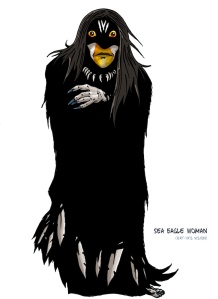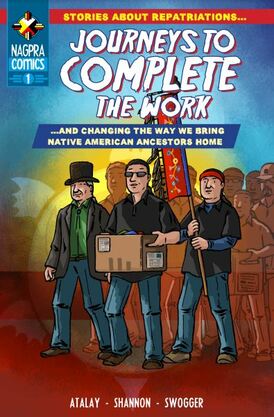
The Cage – Rinko Endo, 2012
I’ve been reading another treat from one of the people I met at the Comics and Medicine conferences – Rinko Endo’s The Cage. One of the really interesting things about the whole genre of graphic medicine is the huge variety of texts being created. We might expect to find works on the experience of living with Cystic Fibrosis (Andrew Godfrey – Sicker Than Thou), miscarriage (Paula Knight – The Facts of Life), eating disorders (Katie Green – Lighter Than My Shadow), caring for a parent with Alzheimer’s (Sarah Leavitt –Tangles), or the experience of being a GP or a nurse (Ian Williams – Disrepute; MK Czerwiec – Comic Nurse). These are difficult topics, and these works deal with “big” themes and “serious” medical situations. Comics like these are surely what graphic medicine is all about. Comics gives these complex and difficult narratives a voice. But comics as a medium can give voice to other kinds of narratives as well, less “big”, perhaps, less “serious” – but no less significant or meaningful to their author: works about blushing, body odour, gallstones or, indeed, orthodontics.
Rinko Endo is a psychiatric nurse whom I first met in Chicago at the second Comics and Medicine conference. There she gave a paper on her comic Aggression Management Manga – a graphic guide for interns and trainees on how to manage difficult and aggressive patients. Her approach was innovative and cleverly culturally-specific. The end result was a not only a great comic, but a great teaching tool.
The Cage is her second complete comic work, and shares the same innovative approach as her Aggression Management Manga. Sub-titled “My Orthodontic Memoir”, it recounts her childhood diagnosis of malocclusion and the subsequent trials and tribulations of living with an orthodontic chin cap. I had a number of friends when I was a kid with various orthodontic retainers, braces and headgear. Beyond these, there’s a whole grim panoply of orthodontic appliances – power chains, coil springs, twin blocks, plates or retainers, facemasks, cervical headgear, headgear helmets, lip bumpers, palate expanders, elastics, bionaters, Herbst appliances, Wilson appliances, hybrid twinblocks, positioner retainers, face frames, face bows and jasper jumpers (thank you, Wikipedia for that exhaustive list) – none of which I’d ever heard of. A chin cap is another one of these devices that I’d never come across – having read The Cage, I’m glad.
How can being clamped into a naugahyde, rubber and steel cage not feel like being captured by the Inquisition? Rinko’s story brings out all the physical discomfort, the skin irritation and the claustrophobia of her chin cap – but also the terrible confusion, humiliation and uncertainty that clouded all around her as she tried to figure out what it was all about. Was her chin cap some kind of obscure punishment? Even the inevitable name-calling and bullying at school was nothing compared to the ambivalence of the adult world. Rinko recounts her Mother’s disappointment, her Aunt’s judgement, her sister’s betrayal and her dentist’s disapproval to illustrate the immediacy of her own frustration and helplessness – and the gulf between that experience and the wider, more long-term concerns of her Mother. It’s a clever juxtaposition, and one that recalls some of the scenes in Aggression Management Manga.
I love Rinko’s visual style. It’s the same cross-cultural mix – shōjo meets Family Circus, perhaps – that worked so well in Aggression Management Manga. She uses this mixture once again to excellent effect, effortlessly slipping in fantasy intercuts, snatches of dream-sequences and manga iconography that push the linear narrative. Her carefully-controlled line style and panel arrangements give her lively characterisations space to bounce around and come to life. Despite all the detail, there’s a certain openness to her panels that recalls colouring-books (I couldn’t resist with the cover – above) – adding a further stylistic reference to the mixture that again, works in the story’s favour.
The Cage ends with a message, one that draws on Rinko’s experience as a psychiatric nurse. It’s an interesting conclusion to the story, wrapped up with a couple of distinctive panels that make excellent use of Rinko’s unique visual style. The cage of the visual simile becomes a personal and professional metaphor. Having to wear a chin cap is not like having cancer or dealing with depression – but Rinko makes it very clear that it’s no less a transformative experience. The Cage is a thoughtful comic that brings out an unexpectedly serious lesson from an apparently trivial childhood experience.
Rinko heads to Japan later this year, and it will be interesting to see how this affects whatever comic project she undertakes next. I’d love to see her work with some of her experiences in psychiatric nursing – there are some fascinating glimpses of this towards the end of The Cage. On the other hand, it would also be interesting to see her turn her attention to subjects outside of medicine – perhaps even this move to Japan.
The Cage is, like Aggression Management Manga, a great example of someone using graphic medicine to bring together personal and professional experience – and a great example of the diversity and distinctiveness of the voices emerging within the genre.
Read Full Post »




